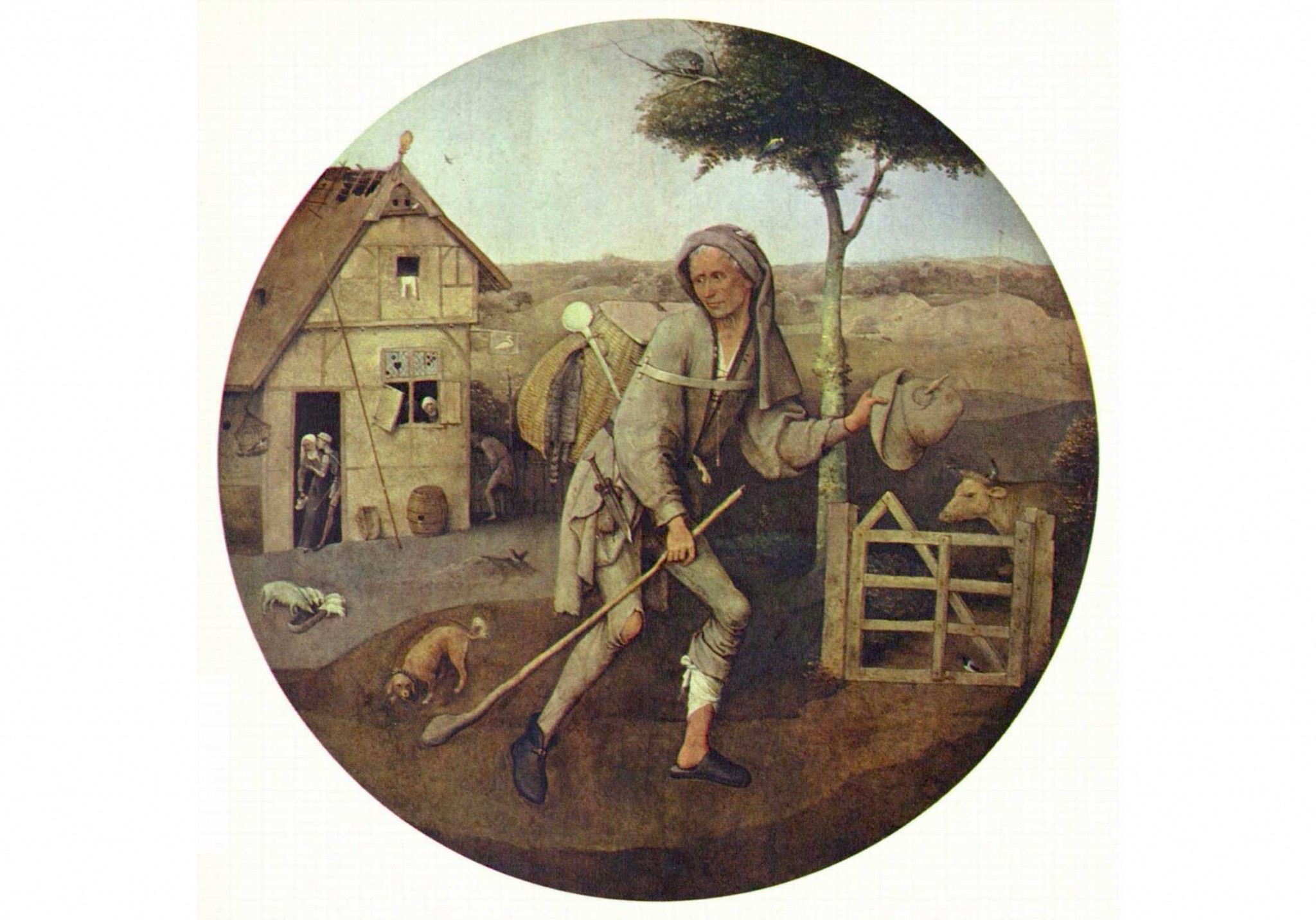
Meijer 1946
“Hieronymus Bosch en de Verloren Zoon” (E.R. Meijer) 1946
[in: Phoenix, vol. 1 (1946), nr. 7, pp. 1-7]
[Also mentioned in Gibson 1983: 122 (E284)]
Meijer interprets the protagonists in the exterior panels of the Haywain and in the Rotterdam tondo as pedlars, and not as representations of the Prodigal Son. He points out that both paintings are very similar, not only with regard to the protagonists but also to the landscape in the background. The robbery in the exterior panels parallels the tondo’s inn (both details refer to the evil world), whereas the dancing farmers (referring to earthly delights) are echoed by the tondo’s ‘fat little cow’. Meijer also points out that the exterior panels clearly do not depict the parable of the Prodigal Son and that because of this it is highly improbable that this would be the case in the tondo.
The only false note in Meijer’s argument so far is that the bovine animal in the tondo is associated with earthly delights, without further references, although the equalization ‘robbery = inn’ also sounds rather arbitrary. The remaining part of Meijer’s argument is, on the whole, as little convincing as these weak elements of the first part of his text. In a number of sixteenth-century representations of the Prodigal Son Meijer notices the presence of a pedlar who is playing dice. He also points out the presence of a pedlar in Peter Balten’s Country Fair painting: this pedlar, who is part of a painted dramatic performance of the rederijkersklucht (rhetoricians’ farce) Plaijerwater (also known to us in written form), carries the same type of basket that can be seen in the exterior panels of the Haywain and in the Rotterdam tondo.
Meijer concludes that it is improbable that Bosch, whose art shows a lot of similarities to the contemporary plays of the rederijkers, would have turned a merchant into the Prodigal Son. However, in the Prodigal Son depictions quoted by Meijer we don’t see dicing pedlars, but obliemannen (travelling waffle sellers whose customers could gamble for their merchandise, which they usually carried in a round drum hanging from their neck), leaving only the Balten painting as a valuable argument. From this painting Meijer also concludes that Bosch painted pedlars/poultry-sellers (in the Plaijerwater farce the pedlar is indeed a poultry-seller). Because kip / hoen (chicken / hen) could mean ‘girl’ in Middle Dutch and the ‘owl spying on a great tit’ motif in the tondo is interpreted as a representation of innocence threatened, Meijer wonders whether Bosch’s pedlars could represent the deadly sin of Lust.
The weakest element in this discussion is the arbitrary observation that Bosch painted poultry-sellers, just because a pedlar/poultry-seller is one of the characters in a rhetoricians’ farce. Other pedlars in contemporary literature and iconography are ignored. Meijer’s hesitant hypothesis that Bosch intended a pun on the word pautenier (tramp) and the name of the sixteenth-century painter Joachim Patinir and that the Rotterdam tondo is perhaps a portrait of this painter, is something that largely goes beyond the limits of what can be accepted from a scientific point of view.
[explicit]